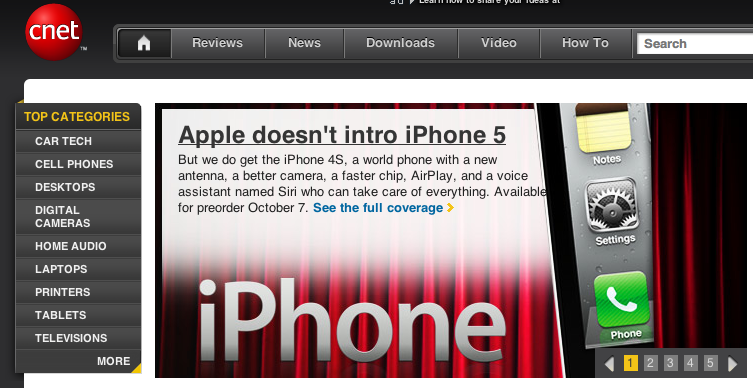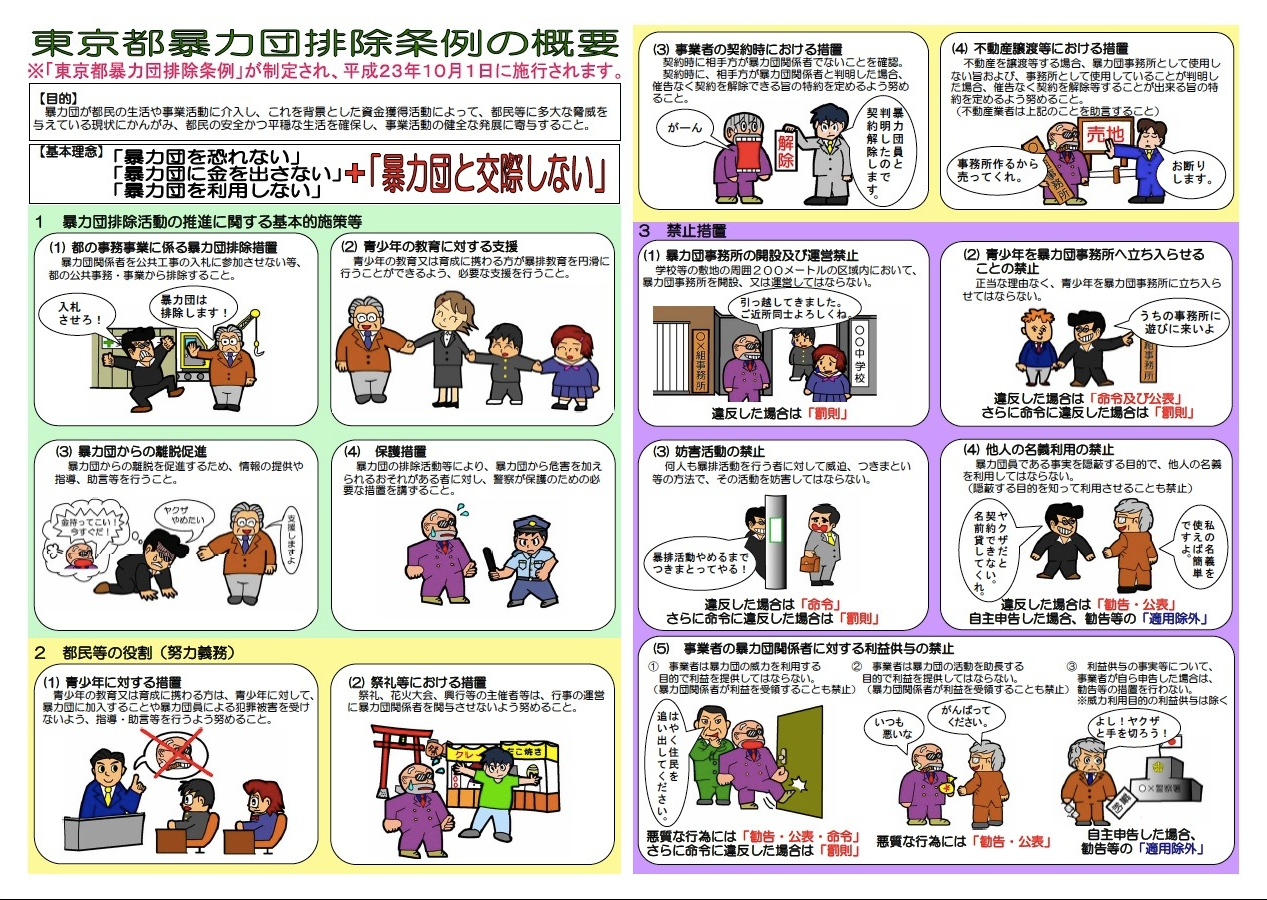Moving to micro four-thirds
My pal MikeD has a great breakdown on what you look for in a camera these days. He makes a good argument that you should either go full frame DSLR, micro-four thirds or camera phone.
My pal MikeD has a great breakdown on what you look for in a camera these days. He makes a good argument that you should either go full frame DSLR, micro-four thirds or camera phone.

Apple also did not announce a cure for cancer. Journalism!
Why the New York Times isn’t using Facebook’s “frictionless sharing”
Michael Donohoe says the Times was concerned about the privacy implications of automatically sharing everything you read. It’s nice to see some pushback against the seemingly endless march of social media intrusiveness.

It’s now illegal to pay off the Yakuza, part of Japan’s efforts to crack down on the local mob. Whether you think this is a good idea or, essentially, blaming the victim, you gotta love this illustrated guide from the Tokyo government. (Click to embiggen)
Instead of a device-siloed software application, Amazon Silk deploys a split-architecture. All of the browser subsystems are present on your Kindle Fire as well as on the AWS cloud computing platform. Each time you load a web page, Silk makes a dynamic decision about which of these subsystems will run locally and which will execute remotely. In short, Amazon Silk extends the boundaries of the browser, coupling the capabilities and interactivity of your local device with the massive computing power, memory, and network connectivity of our cloud.
—The browser built into the new Kindle Fire can offload processing tasks to cloud-based computers. Given how (relatively) underpowered the processors are in mobile devices, this is an interesting solution to some rendering issues that tablets and phones face. Everything from DNS resolution to parsing CSS to executing Javascript can be handled by a beefy computer on a super fast network. Amazon calls it a “limitless cache” aimed at solving some of the last-mile issues that devices are running into beyond just bandwidth.
Ghostery keeps places like Facebook and Google from tracking you
There’s been a lot of talk about Facebook tracking recently, specifically about how logging out isn’t enough to keep them from tracking you. It’s worrisome stuff.
So use Ghostery. Seriously, it’s great. It works as an extension for every browser and lets you configure what is allowed to track you, when and where.
Once you get it installed for your browser, you’ll see an icon with a number, telling you how many third-party sites are tracking your comings and goings on the web. From there, you can selectively turn on and off the “behavioral data trackers”, scummy “contextual” ad networks, evil in-text ad highlighting, social network sharing widgets, offsite comment engines and other privacy-destroying crap.
I like Ghostery because it’s focused specifically on privacy. It doesn’t start with a predetermined blacklist but rather lets you turn off tracking bugs as you come across them. I recommend hitting a few big aggregator type sites (Business Insider or the Huffington Post, say), which have no problem selling as much about you as they can collect, just to see how many tracking mines they lay down. Turn off anything that strikes you as evil, I tend to leave things like Mint or Google Analytics enabled.
As with many browser extensions, be aware that this may break things, particularly sites that rely on Facebook or Twitter to log in. That’s sort of the point. You can whitelist specific sites if you’d like.
I’ve been using Ghostery for a few months now and have been quite happy with it.
Oh, hell YES

Fela Soul - a De La Soul / Fela Kuti mashup. Yeah, it’s good.
The problems that your project solves shouldn’t start with “Wouldn’t it be nice if…” Instead, they should always be phrased, “X sucks because Y and Z.” You may not even have a solution. Technology may not even be the right solution. But please stop adding social layers to social layers and raising 5 million dollarbucks. Your idea is bad and you should feel bad.
—Kelly Sutton makes a smart argument for why your idea is terrible
[The Blogosphere’s Soft Corruption](http://www.mondaynote.com/2011/09/11/the-blogosphere’s-soft-corruption/?utm_source=feedburner&utm_medium=feed&utm_campaign=Feed: monday-note (Monday Note))
2105:
Frédéric Filloux on TechCrunch, Arrington, AOL, CrunchFund, etc. If you’ve avoided this story (probably for great reasons), Filloux grounds it in considering the soft corruption of journalistic ethics.
I get the sense there’s mostly a lot of shrugging about the #crunchgate fiasco and that’s a damn shame. Folks in tech are mostly scared to touch it because Arrington, gaping asshole that he is, wields a lot of power and none of the valley sycophants with their shitty c-list startups want to risk their fake money by opening their mouths.
But Arrington and this whole mess are really a distillation of a truly terrible, treacherous trend and dark side of personal publishing: that pay for play is real, it’s been legitimized and it’s here to stay. Every low-rent tech vlogger who takes a free camera or mommy blogger who gushes about her amazing new washing machine (gratis from Kenmore, be sure to check the FCC guidelines on that before hitting publish, WINK) is perpetuating this problem and it’s only going to get worse.
The lesson here seems to be that the only people who care are a handful of old media journalists. Ethics. LOL.